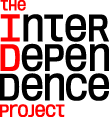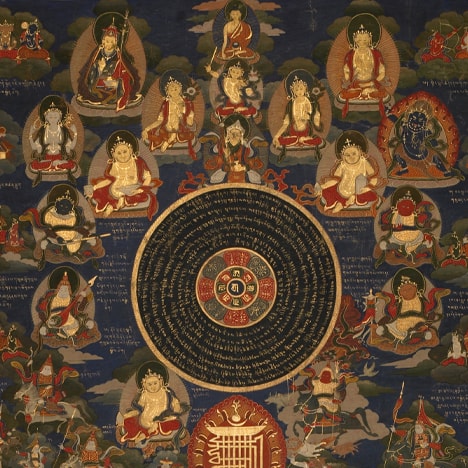
About the Meditation
Meditation session led by Tracy Cochran.
The guided meditation begins at 14:30.
For centuries Himalayan practitioners have used meditation to quiet the mind, open the heart, calm the nervous system, and increase focus. Now Western scientists, business leaders, and the secular world have embraced meditation as a vital tool for brain health.
Whether you’re a beginner, a dabbler, or a skilled meditator seeking the company of others, join expert teachers in a forty-five-minute weekly program designed to fit into your lunch break. Each session will be inspired by a different work of art from the Rubin Museum’s collection and will include an opening talk, a twenty-minute meditation session, and a closing discussion.
This program is supported in part by the Hemera Foundation with thanks to our presenting partners Sharon Salzberg, the Interdependence Project, and Parabola Magazine.


Related Artwork

Theme: Openness
This Tibetan astrological chart is an auspicious talisman and an instructional tool that is believed to bring good fortune to all those who see, display, or possess it. Such charts can often be found hanging on the walls of Tibetan houses and are commonly engraved on amulets worn or carried on one’s person.
The primary figure at the bottom center is a tortoise, a metaphor for creation. On the tortoise’s belly are concentric circles that illustrate, from the inside out, the nine magic numbers (sme ba dgu), the eight trigrams (spar kha brgyad), and the 12 animals of the zodiac, which, combined with the five elements, form the 60-year cycle of the Tibetan calendar. Along the sides are rows of sigils, each representing a negative spirit. These symbols bind those spirits in a contract agreeing to not to harm the displayer of the image. Along the top, Indian deities, planetary deities, and important stars are shown guarding against maladies like epilepsy.
About the Speaker

Tracy Cochran has been a student and teacher of meditation and spiritual practice for decades. She is the founder of the Hudson River Sangha, which is now virtual and is open to all. The link for her weekly meditations can be found on tracycochran.org.
Tracy has taught mindfulness meditation and mindful writing at the Rubin and the New York Insight Meditation Center, as well as in schools, corporations, and other venues worldwide. She is also a writer and the editorial director of Parabola, an acclaimed quarterly magazine that seeks to bring timeless spiritual wisdom to the burning questions of the day. Her writings, podcasts, and other details can be found on her website and on parabola.org.
